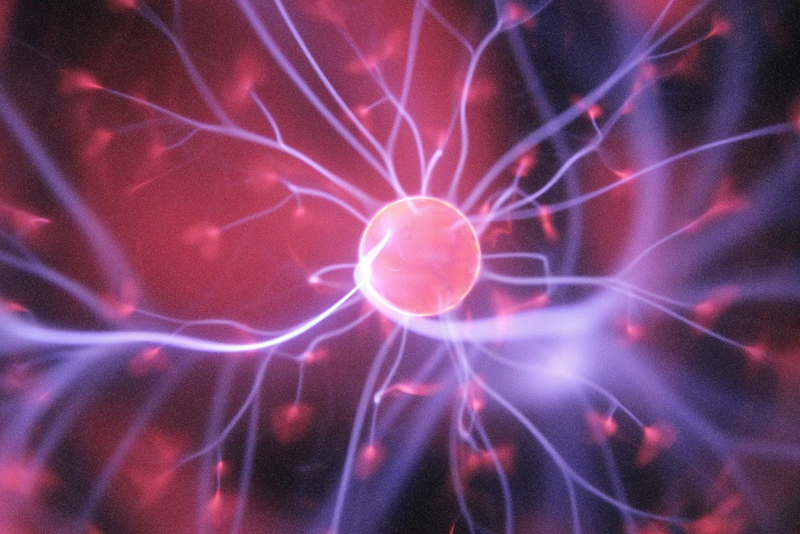Loss Of Voluntary Muscle Control
What Is Cataplexy? – Cataplexy is best described as the sudden onset of voluntary muscle weakness (temporary paralysis) triggered by a strong emotion such as excitement, laughter or stress. Most people have never experienced or witnessed an episode of cataplexy. This sudden loss of voluntary muscle control resulting in temporary paralysis can be daunting especially without the knowledge of what is transpiring.
What Is Cataplexy
Muscles are divided into two groups: voluntary and involuntary. Voluntary muscles are those we retain control over. Involuntary muscles we do not control, such as those that are responsible for us breathing and our hearts beating.
Cataplexy affects only voluntary muscles. This temporary paralysis typically lasts for a minute or two, and patients remain entirely aware and conscious. In rare cases, it can last for up to 30 minutes. It is often misdiagnosed as seizure activity.
What Is Cataplexy Resources
Symptoms • Triggers
Diagnosis • Treatment

What Is Cataplexy And What Are Cataplexy Symptoms
Symptoms of cataplexy vary. Some may be very mild while others are quite severe. The symptoms are caused by muscle atonia (muscle weakness).
- Drooping eyelid
- Facial twitching, grimacing
- Unusual tongue movements
- Head/jaw-dropping
- Jaw tremor
- Knee trembling/buckling
- Difficulty speaking
- Full body collapse
Unlike during seizure activity, the individual remains conscious during cataplexy. The person is able to breathe because only voluntary muscles are affected.
What Is Cataplexy Resources
Symptoms • Triggers
Diagnosis • Treatment

What Is Cataplexy And What Are Cataplexy Triggers
Triggers are inconsistent among sufferers and even among individuals. In other words, what causes one episode may not be the same cause of a separate incident.
The following triggers vary but are often connected to emotion:
- Laughing
- Crying
- Anger
- Stress
- Fear
- Happiness
- Excitement
- Annoyance
- Surprise
- Abrupt withdrawal of an antidepressant medicine
Fatigue causes a higher vulnerability for these triggers.
Cataplexy affects men and women equally. It occurs in patients who suffer from rare disorders including the following:
- Narcolepsy
- Niemann-Pick type C disease
- Prader-Willi syndrome
- Wilson’s disease
It can also develop in those who have experienced the following:
- Strokes
- Multiple sclerosis
- Encephalitis
- Head injuries
What Is Cataplexy Resources
Symptoms • Triggers
Diagnosis • Treatment

What Is Cataplexy And How Is Cataplexy Diagnosis
There is no specific test to diagnose cataplexy. An individual will often complain of a persistent feeling of sleepiness to their medical professional. Unfortunately, this is a common complaint. Often the medical professional will order the following tests:
- Sleep study (polysomnography): This test assesses sleep disorders such as sleep-disordered breathing that can affect sleep quality and quantity.
- Sleep latency test: Sleep latency refers to a measurement of the time it takes to lay down for a daytime nap to the first signs of sleep. The most common test is called Multiple Sleep Latency Test (MSLT). In this test, a person undergoes a series of five naps that are scheduled during the course of the day. The idea behind sleep latency tests is that the sleepier people are, the faster they fall asleep.
- Epworth Sleepiness Scale (ESS): This questionnaire measures the daytime sleepiness of patients by asking 8 questions. On a four-point scale, patients rate their usual chances of dozing while engaged in eight different activities. Sums range from 0-24. The higher the score, the higher is the propensity for daytime sleepiness.
- Patients also undergo a physical exam and blood work. A detailed family history will be taken. Individuals may also be entered into genome-wide association studies that examine genetic components.
What Is Cataplexy Resources
Symptoms • Triggers
Diagnosis • Treatment

Sleep Cycles, Cataplexy and Narcolepsy
Cataplexy is most often associated with narcolepsy. In fact, cataplexy without narcolepsy is rare. However, the two conditions are not synonymous.
Narcolepsy is a neurological disorder. During normal sleep cycles, we progress through stages of non-rapid eye movement (non-REM) sleep and rapid eye movement (REM) sleep. People with narcolepsy experience overlaps of REM sleep while they are awake. The theory is that this occurs because of a decrease in the brain chemical, hypocretin (orexin). Hypocretin neurons keep us alert, awake, and regulate the sleep-wake cycle. This REM overlap explains the symptoms that narcoleptics experience.

Symptoms of Narcolepsy
People with narcolepsy experience excessive sleepiness. Episodes are often described as “sleep attacks” because patients involuntary fall asleep during normal activities.
Narcolepsy sufferers often experience hallucinations while falling asleep (hypnagogia) or while waking up (hypnopompic hallucinations). Hallucinations can be vivid, visual, tactile in nature, and absolutely terrifying. During this time, the sufferer may also experience sleep paralysis (REM sleep atonia).
Narcolepsy symptoms often present during childhood or adolescence. However, many people experience symptoms prior to diagnosis.
There Are Two Types Of Narcolepsy:
Narcolepsy-Cataplexy (Type 1 Narcolepsy)
Type 1 narcolepsy involves low hypocretin orexin levels. Hypocretin neurons are located in the hypothalamus, a part of the brain. These low levels occur when the hypothalamus has been somehow damaged or destroyed. Symptoms include excessive sleepiness accompanied by a sudden loss of muscle tone. Often, the attacks are triggered by a sudden surge of emotion.
Narcolepsy Without Cataplexy (Type 2 Narcolepsy)
With type 2 narcolepsy, there is a persistent feeling of sleepiness despite ample opportunity for sleep. The sense of fatigue comes on quickly, but there are periods of normal levels of alertness between episodes. Sleep attacks are not triggered by a surge of emotion.
Several factors trigger narcolepsy in a person including genetics, major emotional or psychological stress, infection, hormonal changes, and even a change in sleeping habits.
Like cataplexy, sleep latency tests are used to diagnose narcolepsy. The individual will undergo a physical exam as well as questioning about family history.
What Is Cataplexy Resources
Symptoms • Triggers
Diagnosis • Treatment

Cataplexy Treatment
Treatment for cataplexy includes practicing good sleep hygiene:
- Maintain a consistent sleep schedule.
- Strive for 7-9 hours of sleep (or the amount it takes to make you feel like you have had a good night’s sleep).
- Create a relaxing bedroom including blackout curtains if necessary.
- Avoid stimulants at night.
- Exercise regularly but never right before bedtime.
- Schedule one or two short naps a day.
- Medication such as Xyrem (sodium oxybate) may be prescribed. This medication has been found to reduce the frequency and intensity of attacks.
- Selective serotonin reuptake inhibitors (SSRI) antidepressants may be prescribed.
Meditation to avoid surges of strong emotion to help eliminate triggers.
The treatments for narcolepsy overlap with those for cataplexy, specifically practicing good sleep hygiene and taking certain medications. However, the doctor may also prescribe certain antidepressants that suppress REM sleep for type 1 narcolepsy.
What Is Cataplexy Resources
Symptoms • Triggers
Diagnosis • Treatment

What Is Cataplexy The Final Word
Cataplexy and narcolepsy are uncommon afflictions, but they affect people around the world. Understanding these conditions, their causes, symptoms, and treatments can make cataplexy and narcolepsy manageable.
What Is Cataplexy Resources
Symptoms • Triggers
Diagnosis • Treatment



